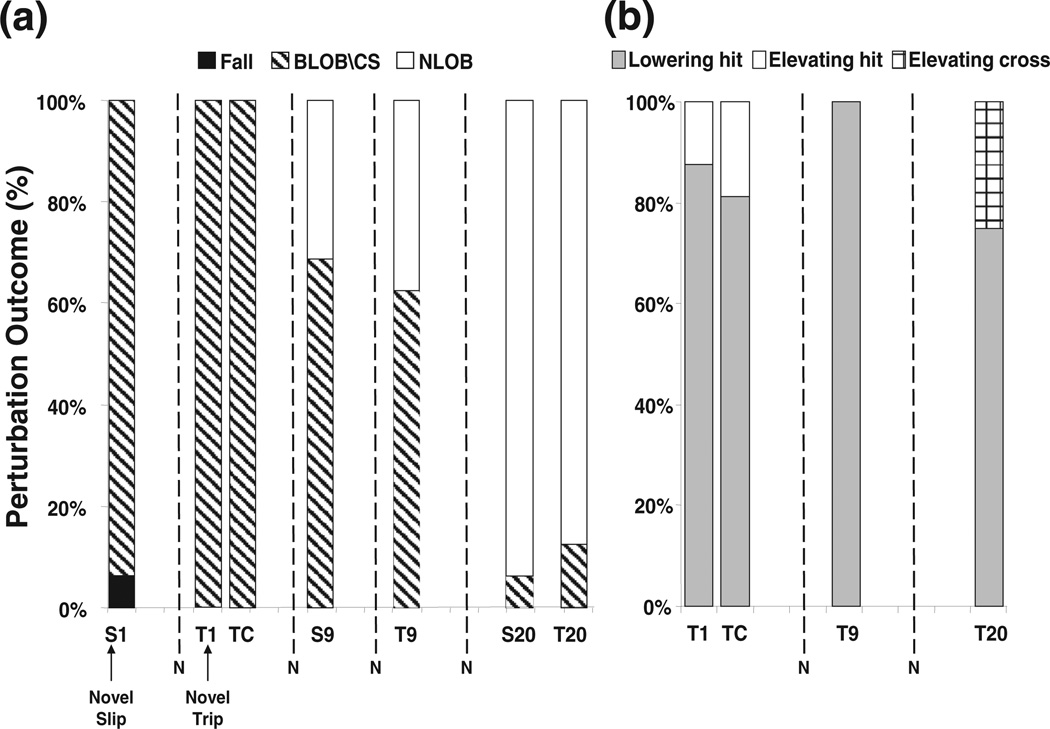Fig. 5.
Shown are (a) the outcomes for selected trials of slips (S1, S9, and S20) and trips (T1, T9, and T20) for the training group, and the outcome of the first novel trip (TC) for the control group. A decrease in the percentage of falls (filled) and backward balance loss (BLOB) or compensatory stepping (CS) (hatched lines) was associated with an increase in the percentage of no loss of balance (NLOB) (unfilled) for the training group. All of the subjects in both the training and control groups had to take compensatory step to recover their balance on the first novel trip (T1 & TC). (b) Also shown were percentage changes in the strategy employed for recovery from selected trials of trips (T1, T9, and T20) for the training group and the first novel trip (TC) for the control group. Lowering-hit strategy (filled): the obstructed foot was rapidly lowered to the ground and the contralateral foot took the compensatory step after obstacle-hit. Elevating-hit strategy (unfilled): the obstructed foot took compensatory step after obstacle-hit. Elevating-cross strategy (cross lines): the subjects could cross over the obstacle without hitting. Overall, over 75% of the subjects in both training and control groups used lowering strategy to recover from a trip.

